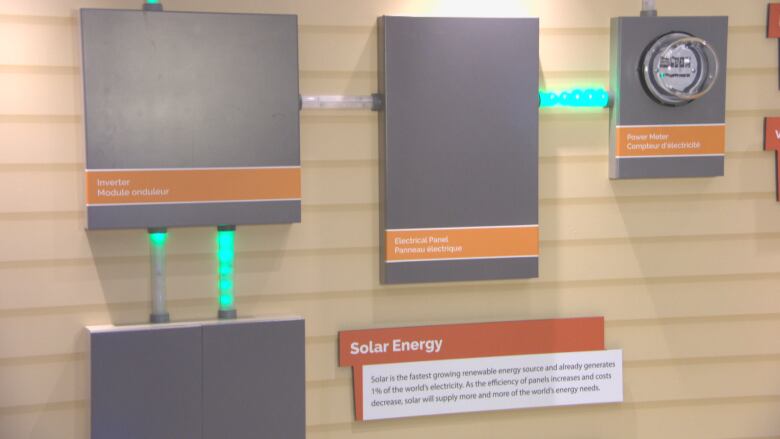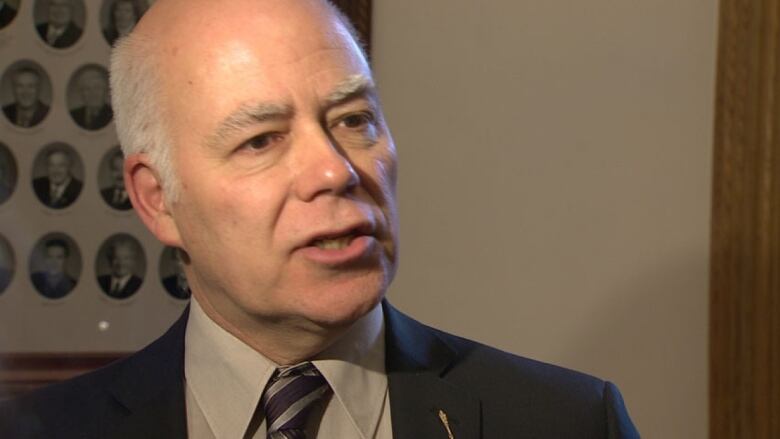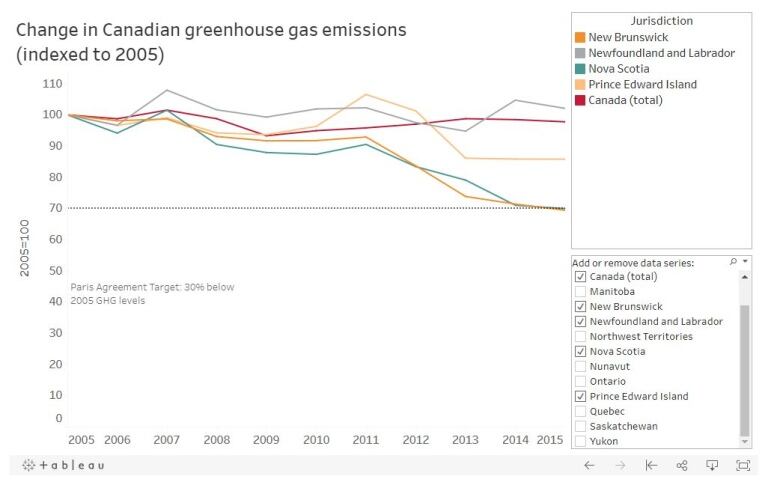Specifics still lacking on Liberals' climate change plan after 1 year
Gallant government has to decide on imposing a carbon tax or going with a cap-and-trade system

It's been one year since Premier Brian Gallant declared he would take bold action on climate change, and to date, there are still few specifics on what the Liberals will do to reduce carbon dioxide emissions.
Gallant released his government's climate strategy on Dec. 7, 2016, telling reporters, "Today we act. We act in a bold yet responsible way."

There were no details of a carbon price, the most-anticipated element of the strategy. Gallant told reporters the Liberals needed "a bit more time" to get the policy right.
- New Brunswick-made carbon pricing scheme coming, Gallant says
- New Brunswick urged to share carbon price plans now
But a year later, there's still no detail on what the province will do to give people an incentive to reduce the consumption of fossil fuels.
'Little detail'
And many other aspects of the climate strategy remain vaguely defined, says Green party leader David Coon.
"We've seen very little, and what has been announced, there's been very little detail," he said.

On Monday, the government announced a series of initiatives to improve energy efficiency, including $101 million in upgrades and retrofits for government buildings over the next five years.
There's also $51 million from the federal government's Low Carbon Economy Fund coming for New Brunswick projects, but "there's still no details on how that $51 million is going to be spent and how much will be available in the next fiscal year," Coon said.
But the carbon price will probably be the most visible, and politically risky, element of the plan.
The government must decide whether to impose a carbon tax that would show up at the gas pump and on heating bills, or a cap-and-trade system that would see emitters buy and trade credits to emit within a government-imposed cap.
A third possibility is some combination of the two.
Join forces
Earlier this year, Nova Scotia Premier Stephen McNeil said New Brunswick and Prince Edward Island were discussing a plan to join his province's cap-and-trade system. But in August, a spokesperson for McNeil said New Brunswick hadn't formally asked to join.
In October's speech from the throne, the Gallant government said it would develop a carbon price that "minimizes the impact on consumers" but requires large industry "to reduce emissions or pay its fair share."
At Monday's energy efficiency announcement, Environment Minister Serge Rousselle said there would be more details of the carbon price "in the coming weeks."
Second thoughts
Progressive Conservative leader Blaine Higgs joked Wednesday that the long wait for a carbon price could mean Gallant is having second thoughts.

"I'd like to think that maybe he's reviewing the targets and realizing we've already hit the targets, and maybe he's listening to [Saskatchewan premier] Brad Wall wouldn't that be a novel concept and saying 'we've hit the targets and we're not going to support a carbon tax.'"
In June, Auditor General Kim MacPherson said New Brunswick had already hit its own 2020 emissions-reduction goal, a 35 per cent reduction from 1990 emissions levels, but "significant action" was needed to hit 2030 and 2050 targets.

A month later, the National Energy Board said in a report that New Brunswick hadreduced emissions enough to hit the Paris climate agreement's goal for 2030, a 30 per cent reduction from 2005 emission levels.
The province says emissions will not continue to decline without additional policy measures.
Higgs hasn't said clearly how he would handle carbon pricing if he is elected premier in next September's election.
He said Wednesday because the carbon price won't be revenue-neutral, "it's one more tax, and you know any innovation we've seen from this government has been innovation through taxation," he said.
Other climate plans
The federal Liberal government says it will impose a carbon price in any province that doesn't craft its own by next year.
Wall's Saskatchewan government released its own climate plan this week, without a carbon price. Wall has threatened a court challenge if Ottawa tries to impose a federal price in the province.
Next door in Manitoba, Premier Brian Pallister's PC government has acknowledged the federal power to impose a carbon price and has come up with its own system. But its carbon tax rate falls short of what Ottawa is demanding.
Coon said the action from other provinces could mean a New Brunswick announcement is coming soon.
"Other provinces have been rolling out their details this week, in fact, and last week, so if there's some kind of discussion among provinces, maybe we'll see something before the end of the week."












_(720p).jpg)


 OFFICIAL HD MUSIC VIDEO.jpg)
.jpg)



























































































